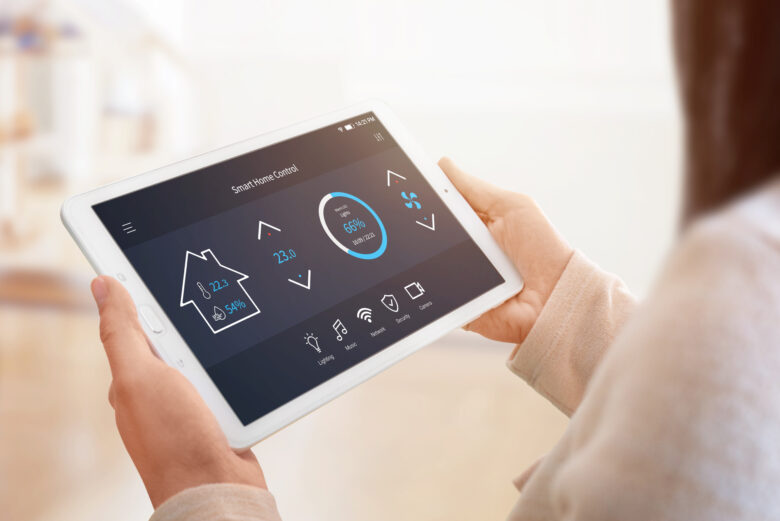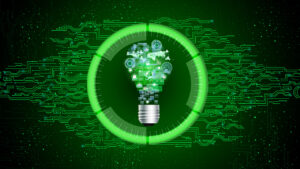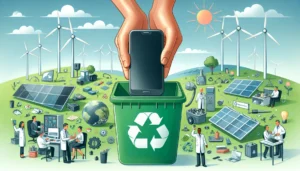Smart home technology has transformed our interaction with our living spaces, providing us with instant convenience and control. Beyond the appeal of automation and remote access, these devices present a compelling opportunity to reduce energy consumption and environmental impact. As utility costs rise and climate concerns grow, homeowners are discovering that smart devices can significantly lower their carbon footprint while keeping more money in their pockets. The key lies in choosing the right devices and using them strategically to optimize energy usage throughout your home.
Smart Thermostats
Smart thermostats represent one of the most impactful energy-saving investments for any home. These devices learn your schedule and preferences, automatically adjusting temperature settings when you’re away or asleep. Unlike traditional programmable thermostats that many people struggle to configure properly, smart thermostats use artificial intelligence to create optimal heating and cooling schedules. They can reduce heating and cooling costs by up to 23%, which translates to substantial savings since HVAC systems account for nearly half of most homes’ energy consumption. Many models provide detailed energy reports, helping you understand usage patterns and identify additional opportunities for savings. Some units even detect when you’re away using your smartphone’s location, ensuring you’re not heating or cooling an empty house.
Smart Lighting Systems
Smart lighting systems offer multiple pathways to energy reduction while enhancing your home’s ambiance. LED smart bulbs consume up to 80% less energy than traditional incandescent bulbs and can be dimmed, scheduled, or controlled remotely. Motion sensors ensure lights turn off automatically when rooms are vacant, eliminating the common problem of forgotten lights burning throughout the day. Smart lighting systems can simulate occupancy patterns when you’re traveling, providing security benefits without the energy waste of leaving lights on continuously. Color-changing capabilities allow you to adjust lighting warmth throughout the day, potentially reducing eye strain and supporting natural circadian rhythms. The ability to group lights and create scenes means you can illuminate only the areas you need, rather than lighting entire rooms or floors unnecessarily.
Smart Plugs and Outlets
Smart plugs address the hidden energy drain of phantom loads—devices that consume power even when turned off. Electronics like televisions, coffee makers, and computer peripherals can draw significant standby power throughout the year. Smart plugs allow you to completely cut power to these devices when not in use, either manually through an app or automatically through scheduling. Many smart plugs include energy monitoring features, revealing exactly how much power connected devices consume. This transparency often surprises homeowners who discover which appliances are their biggest energy users. Some smart plugs can be programmed to turn off automatically when connected devices enter standby mode, providing seamless energy savings without changing your daily routines.
Energy Monitoring Systems
Whole-home energy monitoring systems provide unprecedented insight into your household’s energy consumption patterns. These devices track electricity usage in real-time, breaking down consumption by individual circuits or appliances. By identifying energy-hungry devices and peak usage times, you can make informed decisions about when to run appliances or which devices might need replacement. Many systems send alerts when usage spikes unexpectedly, potentially catching malfunctioning appliances before they waste significant energy. The detailed data helps homeowners understand the true cost of their energy habits, often motivating behavioral changes that lead to substantial savings. Some systems integrate with smart home platforms, automatically adjusting other connected devices based on overall energy usage patterns.
Smart Irrigation Systems
Smart irrigation systems optimize water usage while maintaining healthy landscapes, addressing both water conservation and the energy required for water treatment and delivery. These systems use weather data, soil moisture sensors, and plant-specific watering requirements to create efficient irrigation schedules. By avoiding overwatering and adjusting for rainfall, smart irrigation can reduce outdoor water usage by up to 50%. Many systems include zone control, allowing different areas of your landscape to receive appropriate amounts of water based on plant types and sun exposure. Smart irrigation systems help prevent water waste from broken sprinkler heads or scheduling errors, common problems with traditional timer-based systems. The water savings translate to lower utility bills and reduced strain on municipal water systems.
Smart Appliances
Smart appliances optimize their operation for maximum efficiency while providing enhanced functionality. Smart washing machines can adjust water temperature and cycle length based on load size and soil levels, reducing both water and energy consumption. Smart water heaters learn your usage patterns and heat water only when needed, eliminating the energy waste of maintaining hot water temperatures around the clock. Smart refrigerators can adjust cooling based on usage patterns and even suggest energy-saving settings. Many smart appliances can be programmed to run during off-peak hours when electricity rates are lower, providing cost savings while reducing strain on the electrical grid. These appliances often include diagnostic features that alert you to maintenance needs, helping maintain peak efficiency throughout their lifespan.
Solar Panels and Energy Storage
Smart solar panels and energy storage systems represent the pinnacle of home energy independence and environmental responsibility. Modern solar installations include smart inverters that optimize energy production throughout the day and provide detailed performance monitoring. Smart battery systems store excess solar energy for use during peak rate hours or power outages, maximizing the value of your solar investment. These systems can automatically switch between solar power, battery power, and grid power based on availability and cost, ensuring you always use the most economical energy source. Many systems integrate with other smart home devices, using excess solar production to power energy-intensive appliances during peak generation hours. Smart energy storage can also participate in grid services programs, potentially earning money while supporting grid stability.
Taking Action for Energy Savings
Smart home devices offer a practical pathway to significant energy savings and environmental benefits. The key to success lies in choosing devices that match your specific needs and usage patterns. Start with high-impact devices like smart thermostats and lighting systems, then expand to other areas as you become comfortable with the technology. Remember that the greatest benefits come from using these devices strategically, taking advantage of their automation and optimization features rather than simply controlling them manually. As smart home technology continues to evolve, early adoption positions you to take advantage of future innovations while immediately beginning to reduce your energy consumption and environmental impact.
FAQs
1. How much can smart home devices really save on energy bills?
Savings vary by device and usage patterns, but homeowners typically see 10-25% reductions in energy bills after implementing comprehensive smart home systems, with smart thermostats alone potentially saving 10-15% on heating and cooling costs.
2. Are smart home devices difficult to install and use?
Most smart devices are designed for easy installation and setup, with many requiring no more than plugging in and connecting to your Wi-Fi network. Smartphone apps provide intuitive control interfaces that most users find straightforward.
3. Will smart home devices work during power outages?
Most smart devices require power to operate, but systems with battery backup or solar energy storage can continue functioning during outages. Some devices retain their settings and resume smart operation when power returns.
4. How do smart home devices help the environment beyond energy savings?
Smart devices reduce overall energy demand, decreasing the need for fossil fuel power generation. They also optimize resource usage, like water, and can extend appliance lifecycles through better maintenance monitoring.




